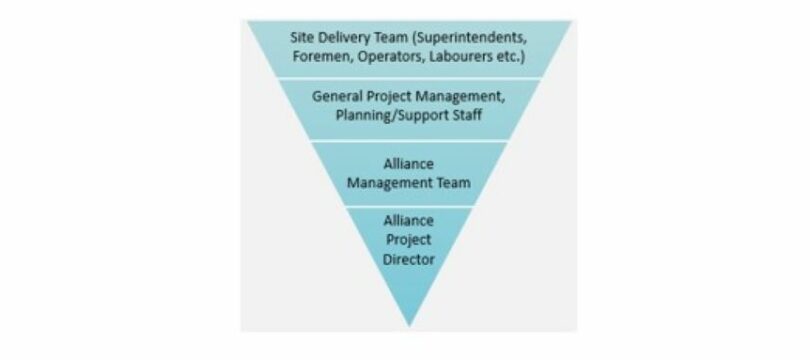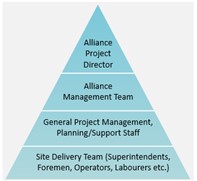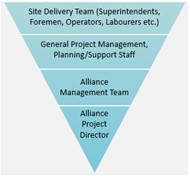
The title of this blog is meant to provoke a response from our readers as I was horrified to hear the above trotted out at a leadership workshop a friend of mine attended. The intended key message of the session was supposed to be this affirming statement. Each member of the AMT was asked: “Which is the most important team?”, to which they were all expected to answer in turn, and to script: “The AMT!”. The trouble is when it reached my friend’s moment to join the chorus, he couldn’t bring himself to say it. His answer aligned far more closely with what I feel, and the extensive research backs up from a leadership perspective, that leaders “eat” last.
The most important team is the wider Alliance team out there doing the work, digging the trenches, driving the machinery, actually working on the asset(s) that are being created to benefit the community and our stakeholders. The whole purpose of anyone on a project who doesn’t wear boots and a hard hat, is to enable and support the people that do to work in the most efficient and productive way. Without the people out there on the tools, the work of those in the leadership carries no purpose whatsoever, in fact, the leadership doesn’t even exist without an engine to drive. Whatever your organisation, there is a layer which actually delivers the work and brings in the revenue, fees and benefits, upon which the whole organisation depends. Our job as leaders, is to act in service to these people.
Now, this is hardly revolutionary, but I have often used the traditional hierarchical triangle of a business, in this case an Alliance Project to illustrate this, that looks something like this:

There is sometimes an inverse triangle that sits above, showing the Project Alliance Board, Client and any other governance structures that exist above the Alliance Project Director (APD), but in the interest of simplicity we will keep it as shown. In addressing any part of the organisation it is useful to present this triangle, which is familiar to pretty much everyone. You then spin it around so it looks like this:

It is a very simple concept, that captures the nature of service leadership beautifully. Effective leadership is about elevating the needs of those around you, enabling the things that will help them to be successful, which in a happy coincidence, will also make you successful. The most effective leaders, and leadership teams, act as servants to their business and wider organisation, respecting the importance of all members of their team, regardless of the level at which they sit.
Now, that being said, of course the AMT is an important team. They are important because they are hugely influential in establishing, championing and maintaining the conditions for success within the Alliance/organisation. They are the team that drives the functional aspects of the Alliance, leading on culture, planning, role clarity, communication and collaboration. But to be effective, they must recognise and prioritise that they are in service to the business. Perhaps the intended message in the workshop was to highlight that the AMT needs to be a priority for AMT members rather than remaining in their functional silos, but this is secondary to creating and facilitating a constructive environment for the wider team to be successful as the primary purpose of an effective AMT.
Needless to say, change became necessary and inevitable because of this approach. However, with a new team, new service-based attitude and enhanced Alliance coaching regime, this organisation is now thriving with a strong focus on being of service to their client, stakeholders and their wider team.



